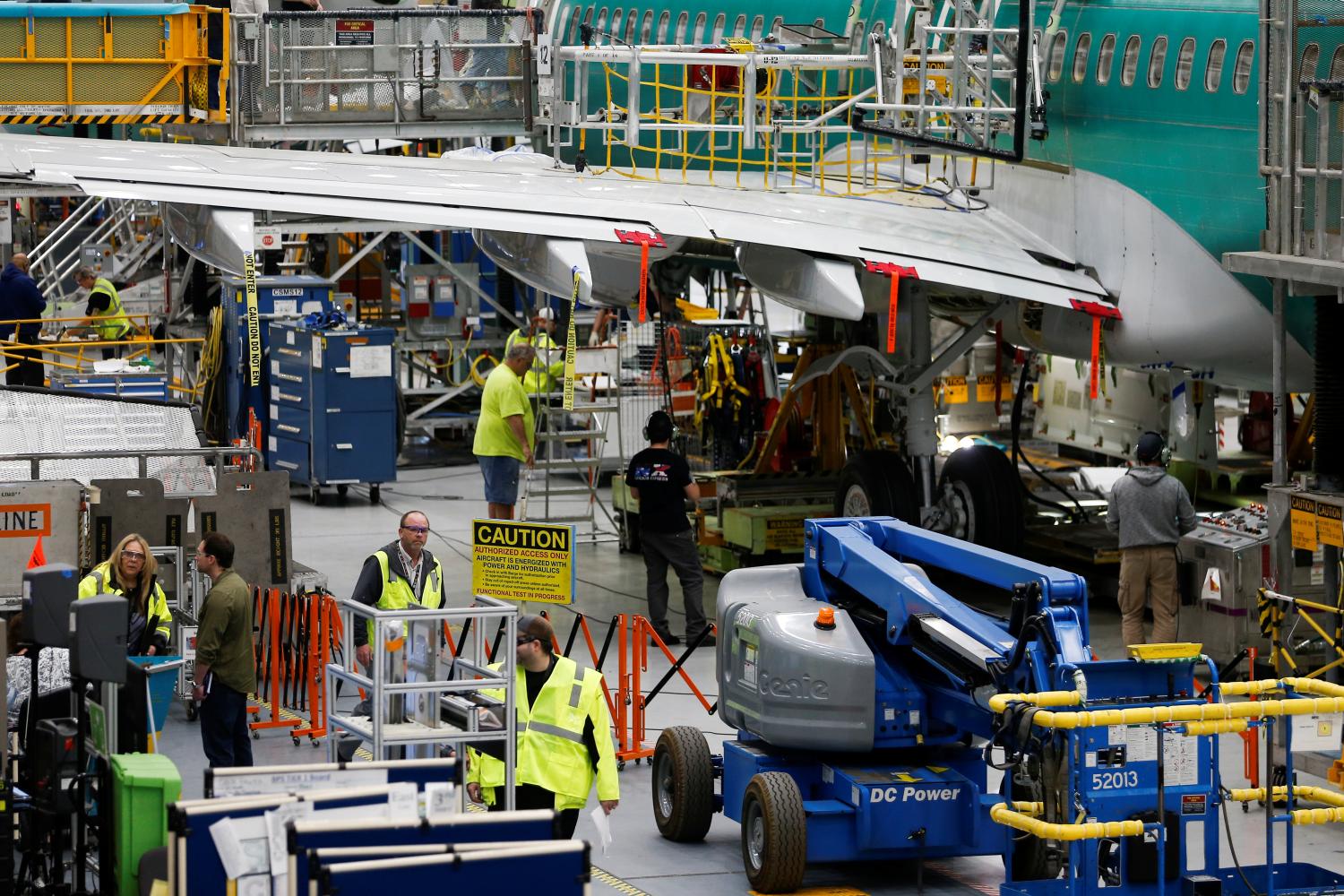This is the third section of “Employer Perspectives on Workforce Development,” a series that examines how business leaders are adapting to the future of work.
The skills that employers require among their employees are changing as technology reshapes the nature of work. In this context, employers must invest in strategies to identify what these new skills are, a difficult task given the fast pace of change and the uncertainty about precisely which skills will be valuable in the near- to long-term.
Suzanne van de Raadt is a vice president in global communications at Arconic, an advanced materials manufacturing company headquartered in Pittsburgh, Pennsylvania, that employs about 43,000 people. This post discusses van de Raadt’s perspective on the central challenge with respect to workforce development: uncertainty about what skills the company’s employees will need in the future. Van de Raadt describes Arconic’s efforts to identify skills and knowledge gaps as a key part of the company’s strategy to adapt to this fast-paced change.
Acknowledging and addressing ambiguity
Van de Raadt identifies the biggest challenge with respect to both recruitment and development as uncertainty about what van de Raadt describes as the “target state,” or the set of skills the company will ultimately need to develop in their employees. For example, the company began to develop a training plan in areas such as data analytics to help employees develop new skills, but quickly realized that it was not entirely clear what the desired skills would be. This experience illustrates one of the challenges that employers face with respect to workforce development: When you don’t know the end goal, it is hard to develop a plan to get there. In van de Raadt’s words, the “biggest challenge is we don’t know exactly where we want to be, so it’s a journey.”
“Ambiguity about the future, paired with a clear need for change and innovation, is perhaps a defining characteristic of current conversations on the future of the workforce.”
Ambiguity about the future, paired with a clear need for change and innovation, is perhaps a defining characteristic of current conversations on the future of the workforce. For all the research that has been produced about how technological innovations will change the nature of work–and there is a lot of it (see here, here, and here)–many acknowledge that it is hard to predict exactly how work will change, and what the consequences will be for employees and employers alike.
Employers have an important leadership role to play in clearing up some of this ambiguity, at least with respect to the skills they are seeking in employees. At Arconic, van de Raadt explains that part of their solution has been to undertake a two-year long project to create a skills gap assessment and a knowledge gap assessment. In a 2017 report by The National Center for the Middle Market and The Brookings Institution, the authors describe skills mapping assessments as a promising approach. Mapping entails identifying “the actual skills and behaviors that would make someone successful in that particular position. Effective mapping is the first step in assessing the skills and strengths of the workforce, and determining where gaps might exist.”
Importantly, such assessments enable employers to accurately signal the skills they are looking for and to plan aligned development programs and recruitment strategies. While accurate signaling may sound simple, experts argue that “employer signaling remains elusive and unclear.” Inaccurate signaling contributes to the skills gap: Potential employees are left in the dark about what skills employers will find valuable, and they may pursue educational or training programs that do not adequately prepare them for available jobs. In turn, employers struggle to find appropriately trained employees.
Indeed, the 2018 Manpower Group Talent Shortage Survey found that in 2018, 46% of surveyed employers are “having difficulty filling jobs in the United States,” a percentage that is level with 2016 but up from 32% in 2015. Lack of applicants and lack of experience are the top two drivers of talent shortages reported in the survey, while lack of required hard skills is number four (applicants expect higher pay than offered is number three). The report’s recommendations for how employers can address these challenges include “invest in learning and development to grow your talent pipeline,” echoing other research discussed throughout this series.
Employers cannot singlehandedly close this gap, but it is clear that an important first step is for employers to identify the skills they need. One approach to doing so is developing the type of skills and knowledge gap assessments like those that Arconic are working on. Creating these tools is likely the beginning of a longer journey. With respect to these assessments, van de Raadt notes, “One challenge we face is to keep it a living tool.” To remain useful for employers, these tools will likely need to be updated regularly.
The fundamentals, new and old
On a slightly brighter side, members of the younger generation may have a built-in advantage, at least when it comes to digital literacy. Similar to John Hazen White Jr., CEO of Taco Inc., van de Raadt realizes that digital literacy is an advantage that the younger generation possesses in this difficult hiring environment. Van de Raadt clarifies that with respect to digital literacy, “I don’t need experts.” Rather, van de Raadt values the basics: “Making sure they feel comfortable using an iPad, or a smartphone, or bar-code readers, not just paper. … [It] might sound silly, but some people really struggle with those.” While those who grew up as digital natives might not consider these salient skills, at least from van de Raadt’s perspective, they are.
However, van de Raadt also emphasizes that more traditional fundamentals are as important as ever. She explains that, if educational institutions can equip students with “a very strong math foundation,” the company can then build on these skills. Van de Raadt also describes training in new technology such as robotics or big data as valuable, but ultimately returns to the value of math, describing it as “the critical skill.” This is not to say that additional training will not be necessary. Rather, from Arconic’s perspective, math provides an important foundation upon which employees can build additional skills.
“[F]rom Arconic’s perspective, math provides an important foundation upon which employees can build additional skills.”
Van de Raadt is not alone in highlighting the importance of basic skills. Unfortunately, according to a 2014 report by Business Roundtable, many employers describe a lack of “employability skills”–including “the ability to use basic math, read technical manuals, work effectively on teams and participate in problem-solving”–as one of the main “skill deficiencies they encounter when recruiting employees.”
There is no easy solution to improving foundational math skills in the American workforce. Of course, the K-12 and higher education systems have a central role to play. Yet employers have a role to play as well in both signaling the value of these skills and in building partnerships with schools to help students develop core competencies. Indeed, as discussed throughout this series, experts frequently describe employer-educator partnerships as a key part of the strategy to address the skills gap. For example, employers can help potential employees develop the necessary skills through internship programs. When reflecting on successes that Arconic has had with respect to workforce development, van de Raadt discusses the internship program at Arconic, which relies on many different local partnerships.
Unfortunately, employer-educator partnerships are underused. The same is true for internship programs, another valuable strategy for closing the skills gap; for example, only 42% of middle market companies have internship programs. Van de Raadt notes the danger in relying on development and recruitment strategies that are not adapted to the current environment. With respect to the relationship between educators and employers, she observes: “I think the flexibility is the most important thing. … If we operate the way we did before, it’s not going to work any longer.”
Conclusion
Many experts would agree with van de Raadt’s assessment that innovation is necessary, and that old models of recruitment and training are now outdated. There is no shortage of ideas about how to create robust talent pipelines, and while some strategies may require looking outside an organization to build partnerships, others are very much within an organization’s control. One example of this type of strategy is the skills assessment that van de Raadt describes, a strategy recommended by experts as a crucial first step in providing clearer signals about the skills that employers seek.
To address these challenges, employers must ultimately decide to embark on what van de Raadt describes as a journey toward developing appropriately skilled workforces. Indeed, research is clear about the value of investing in strategies designed to create more robust pipelines. Examples like Arconic illustrate this point, underscoring the need to not only anticipate but also plan for changing workforce needs.
Read the next section of “Employer Perspectives on Workforce Development,” or visit the series homepage.
The Brookings Institution is a nonprofit organization devoted to independent research and policy solutions. Its mission is to conduct high-quality, independent research and, based on that research, to provide innovative, practical recommendations for policymakers and the public. The conclusions and recommendations of any Brookings publication are solely those of its author(s), and do not reflect the views of the Institution, its management, or its other scholars.
Arconic Foundation provides general, unrestricted support to The Brookings Institution. The findings, interpretations, and conclusions posted in this piece are not influenced by any donation. Brookings recognizes that the value it provides is in its absolute commitment to quality, independence, and impact. Activities supported by its donors reflect this commitment.
The Brookings Institution is committed to quality, independence, and impact.
We are supported by a diverse array of funders. In line with our values and policies, each Brookings publication represents the sole views of its author(s).







